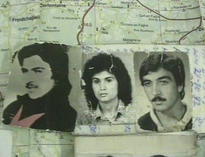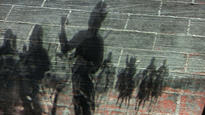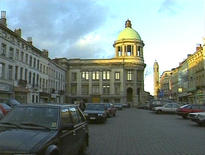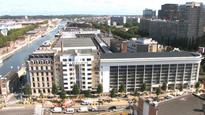ERFGOEDDAG 2011: THE CANAL NEIGHBOURHOOD: MY WORLD? THE PAST AND PROSPECTS OF A BRUSSELS NEIGHBOURHOOD
SCREENING
With its collection of 3000 works of audiovisual art going back to the 1960s, Argos is the country’s largest guardian of the heritage in this field. On Sunday 1 May the arts centre is joining forces with Heritage Day, which this year has the title Armoe Troef (Poor as Church Mice) and, in about 600 separate activities, will try to highlight poverty and the people in the past who found it difficult to make ends meet.
In the Black Box screening room we are presenting The canal neighbourhood: my world?, three films from Argos’ collection intended to link up with the overall theme of the Heritage Day. Argos is located in the canal neighbourhood – an area with an eventful history and still in the midst of transformation – and the works are about migration and deprivation, as well as about the day to day activities of its inhabitants and the past and the prospects the immediate surroundings offer.
For her intense work Pour vivre, j’ai laissé (2004), Bénédicte Liénard went to the Klein Kasteeltje (reception centre for asylum-seekers) on the canal-side. The asylum-seekers themselves did the camerawork. In this way the film shows the human side of life in this widely-known place in Brussels: subjective stories of the flows of migration in Belgium, the outpourings and worries of people who are in many cases surviving in atrocious conditions.
In Jef Cornelis’ informal essay Brussel, scherven van geluk (1995), the local community in the borough of Molenbeek represents contemporary Brussels. A place which, forty years ago, was a typical suburb is now known to its many immigrants as ‘Molem, mon village’. The past is traced through archive material, and Cornelis portrayed the often very poor inhabitants of Molenbeek sixteen years ago; the situation today is little different. This unusual documentary is based on the notion that inhabitants of Brussels still cling to the fantasy of progress as propagated by Expo 58, a dream which has now collapsed into a ruin.
For Boulevard d’Ypres/Ieperlaan, Sarah Vanagt used her own street, Ieperlaan, as the setting and the subject. Urban development is forcing out the Mediterranean shops that give this street its specific appeal. To record the memory of the street she speaks to the shopkeepers, Salvation Army staff and all those who cross her path/pavement. She tells their stories in the form of fairytales.
Programme:
14:00 – 15:00
Bénédicte Liénard - Pour vivre, j’ai laissé
2004, video, 30’26", colour, several languages spoken, English subtitles.
15:00 – 16.30
Jef Cornelis - Brussel, scherven van geluk
1995, video, 57’24", colour and black & white, Dutch spoken, English subtitles.
17:00 – 18:00
Sarah Vanagt - Boulevard d’Ypres/ Ieperlaan
2010, video, 65’, colour, Dutch, French and English spoken, English subtitles.






-
zo 01.5.2011
14:00 - 18:00 -
Praktische info
Location: Argos, Werfstraat 13 rue du Chantier, 1000 Brussels
Opening hours: 14:00 - 18:00
Entrance Fee: free event - Kunstenaars
- Werken